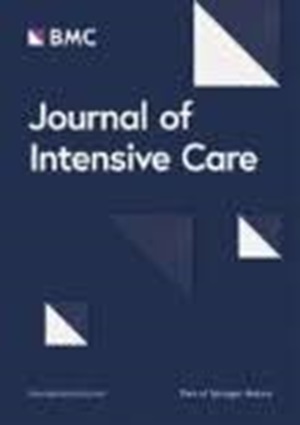重症患者的最佳血糖目标:最新网络荟萃分析
IF 4.7
2区 医学
Q1 CRITICAL CARE MEDICINE
引用次数: 0
摘要
急性血糖控制对重症患者的临床疗效有重大影响。这项最新的网络荟萃分析研究了四种目标血糖水平(180 毫克/分升)的利弊。通过分析 37 项试验中 27,541 名患者的数据,死亡率和低血糖的累积排名曲线下表面值在目标血糖水平为 144-180 毫克/分升时最高,而感染和急性肾损伤的累积排名曲线下表面值在 110-144 毫克/分升时最高。考虑到优先考虑的结果,还需要进一步的证据来确定 110-144 或 144-180 毫克/分升作为最佳血糖目标值是否更优。本文章由计算机程序翻译,如有差异,请以英文原文为准。
The optimal glycemic target in critically ill patients: an updated network meta-analysis
Acute glycemic control significantly affects the clinical outcomes of critically ill patients. This updated network meta-analysis examines the benefits and harms of four target blood glucose levels (< 110, 110–144, 144–180, and > 180 mg/dL). Analyzing data of 27,541 patients from 37 trials, the surface under the cumulative ranking curve for mortality and hypoglycemia was highest at a target blood glucose level of 144–180 mg/dL, while for infection and acute kidney injury at 110–144 mg/dL. Further evidence is needed to determine whether 110–144 or 144–180 mg/dL is superior as an optimal glucose target, considering prioritized outcomes.
求助全文
通过发布文献求助,成功后即可免费获取论文全文。
去求助
来源期刊

Journal of Intensive Care
Medicine-Critical Care and Intensive Care Medicine
CiteScore
11.90
自引率
1.40%
发文量
51
审稿时长
15 weeks
期刊介绍:
"Journal of Intensive Care" is an open access journal dedicated to the comprehensive coverage of intensive care medicine, providing a platform for the latest research and clinical insights in this critical field. The journal covers a wide range of topics, including intensive and critical care, trauma and surgical intensive care, pediatric intensive care, acute and emergency medicine, perioperative medicine, resuscitation, infection control, and organ dysfunction.
Recognizing the importance of cultural diversity in healthcare practices, "Journal of Intensive Care" also encourages submissions that explore and discuss the cultural aspects of intensive care, aiming to promote a more inclusive and culturally sensitive approach to patient care. By fostering a global exchange of knowledge and expertise, the journal contributes to the continuous improvement of intensive care practices worldwide.
 求助内容:
求助内容: 应助结果提醒方式:
应助结果提醒方式:


